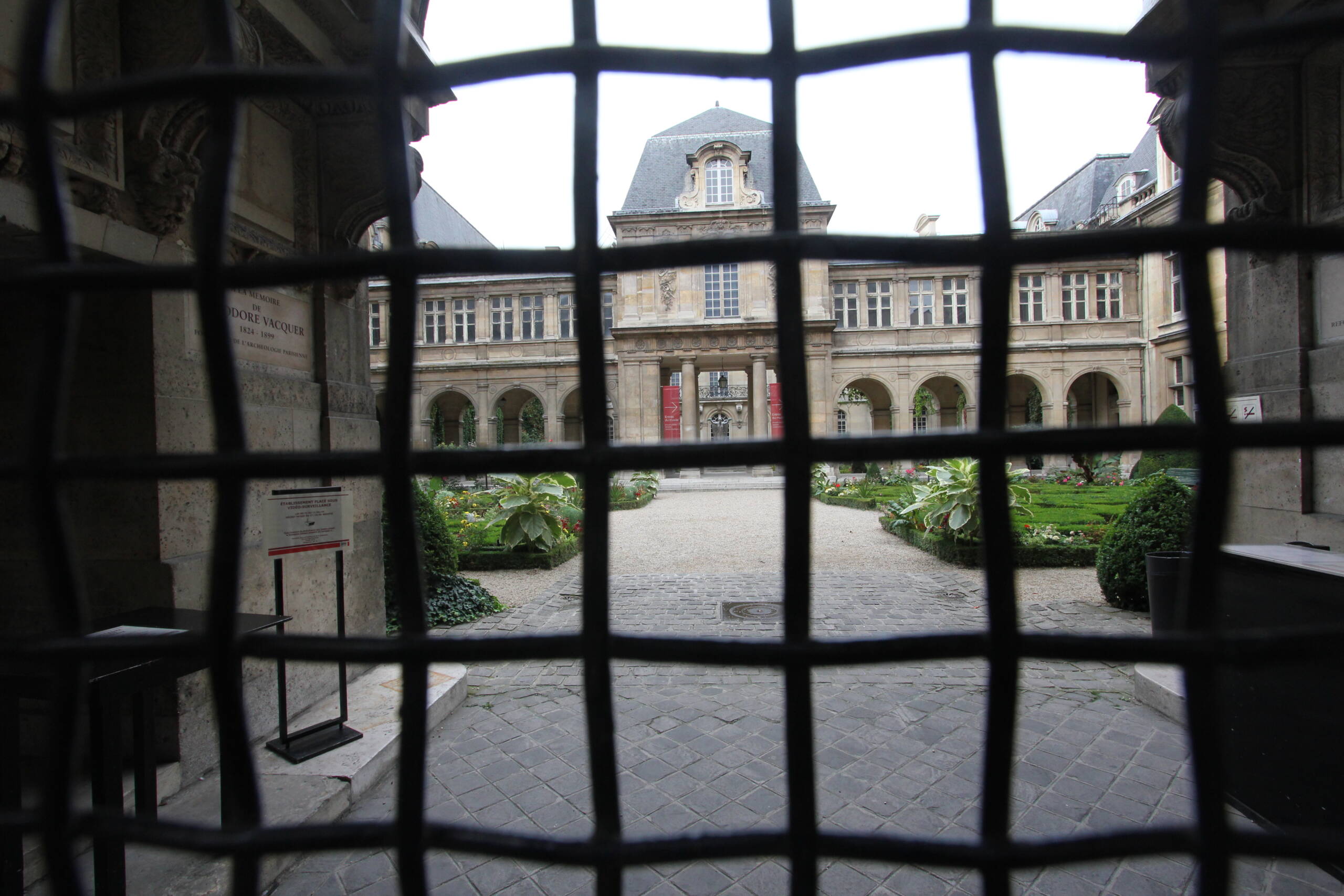There is something strangely poetic about seeing a historic courtyard through a black iron grille, as though history itself is both tantalizingly near and yet withheld. The photograph captures the Hôtel de Sens in Paris, a late medieval palace that once hosted archbishops and queens, and now houses the Bibliothèque Forney, a library dedicated to the decorative arts. The perspective from behind the gate transforms the view into a tableau of restrained grandeur, where the Renaissance façade, softened by time and weather, rises beyond a neatly tended garden. The framing grid imposes a sense of distance, as though one were a curious outsider peering into a hidden world.

The architecture speaks of a Paris that still bears the weight of the Middle Ages yet strains toward the classical order of the Renaissance. Stone arches open onto shaded colonnades, while the slate roof and dormer windows echo the confident elegance of sixteenth-century France. Within the courtyard, orderly flowerbeds and clipped shrubs form a delicate counterpoint to the weight of masonry, reminding the visitor that this was always a residence as much as a fortress of faith and authority. The scene embodies both strength and refinement, a dialogue between permanence and beauty that is quintessentially Parisian.
Yet the most striking element is not architectural at all, but the vantage point itself. The camera’s gaze, interrupted by the black mesh of the gate, introduces a note of longing, almost voyeurism. It is as if the viewer were denied entry not just to a building but to another time—Paris as it was centuries ago, when queens like Margaret of Valois resided here and when power was measured not only in crowns but in the stone walls that guarded them. This tension between access and exclusion, vision and obstruction, makes the image a metaphor for the traveler’s experience: always glimpsing, never quite grasping, the elusive totality of the city.
Paris, after all, thrives on such half-revealed secrets. The city does not simply present itself; it withholds, it tempts, it forces you to wander further, to seek another doorway, another perspective. To stand before the Hôtel de Sens and see it through iron bars is to understand that Paris is not a city to be consumed in a single glance but to be pursued, slowly, as one might pursue an elusive lover across centuries. The beauty lies not only in what is seen, but in what remains just out of reach.
Leave a Reply